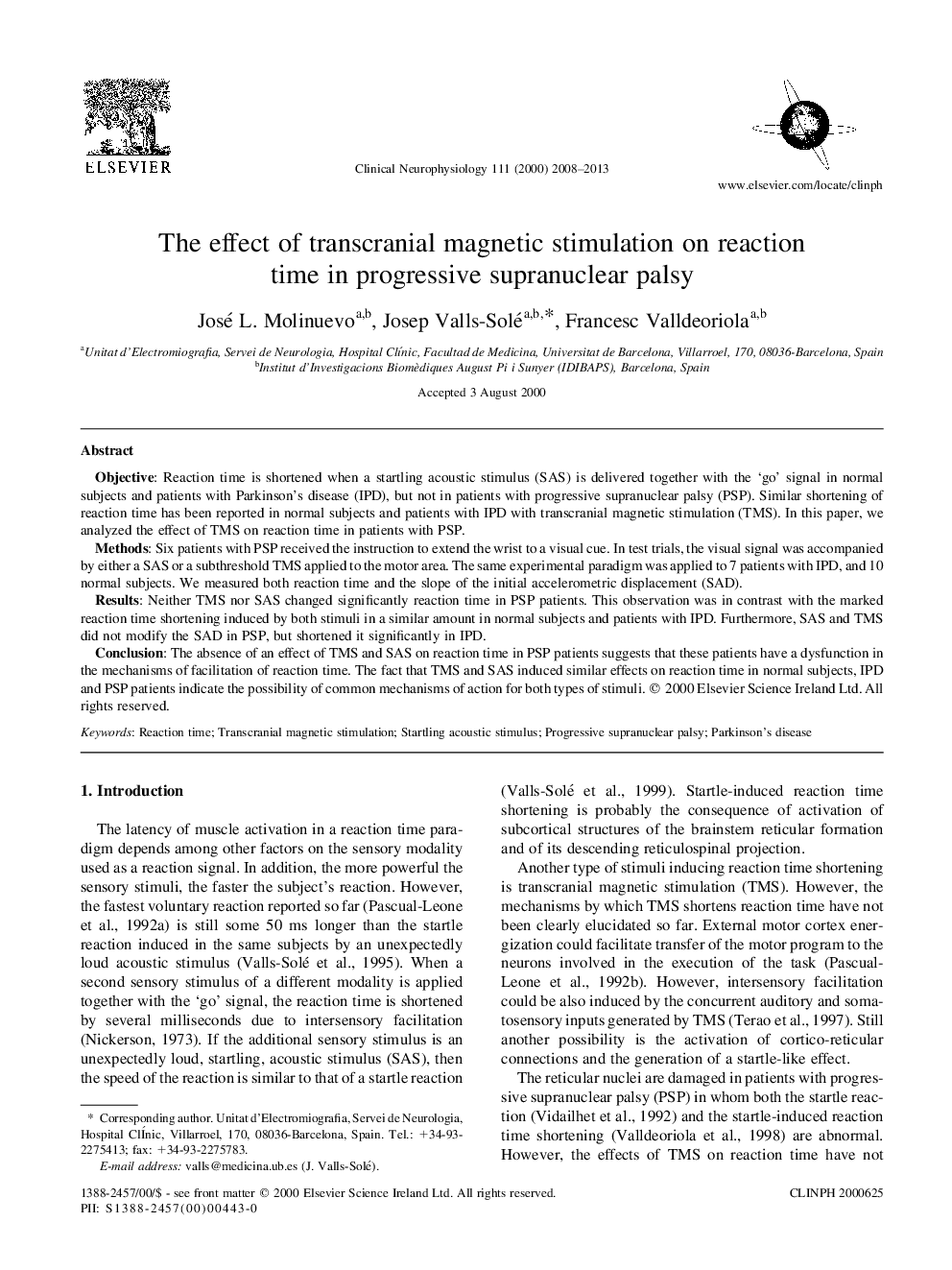| Article ID | Journal | Published Year | Pages | File Type |
|---|---|---|---|---|
| 3049177 | Clinical Neurophysiology | 2013 | 6 Pages |
Objective: Reaction time is shortened when a startling acoustic stimulus (SAS) is delivered together with the ‘go’ signal in normal subjects and patients with Parkinson's disease (IPD), but not in patients with progressive supranuclear palsy (PSP). Similar shortening of reaction time has been reported in normal subjects and patients with IPD with transcranial magnetic stimulation (TMS). In this paper, we analyzed the effect of TMS on reaction time in patients with PSP.Methods: Six patients with PSP received the instruction to extend the wrist to a visual cue. In test trials, the visual signal was accompanied by either a SAS or a subthreshold TMS applied to the motor area. The same experimental paradigm was applied to 7 patients with IPD, and 10 normal subjects. We measured both reaction time and the slope of the initial accelerometric displacement (SAD).Results: Neither TMS nor SAS changed significantly reaction time in PSP patients. This observation was in contrast with the marked reaction time shortening induced by both stimuli in a similar amount in normal subjects and patients with IPD. Furthermore, SAS and TMS did not modify the SAD in PSP, but shortened it significantly in IPD.Conclusion: The absence of an effect of TMS and SAS on reaction time in PSP patients suggests that these patients have a dysfunction in the mechanisms of facilitation of reaction time. The fact that TMS and SAS induced similar effects on reaction time in normal subjects, IPD and PSP patients indicate the possibility of common mechanisms of action for both types of stimuli.
